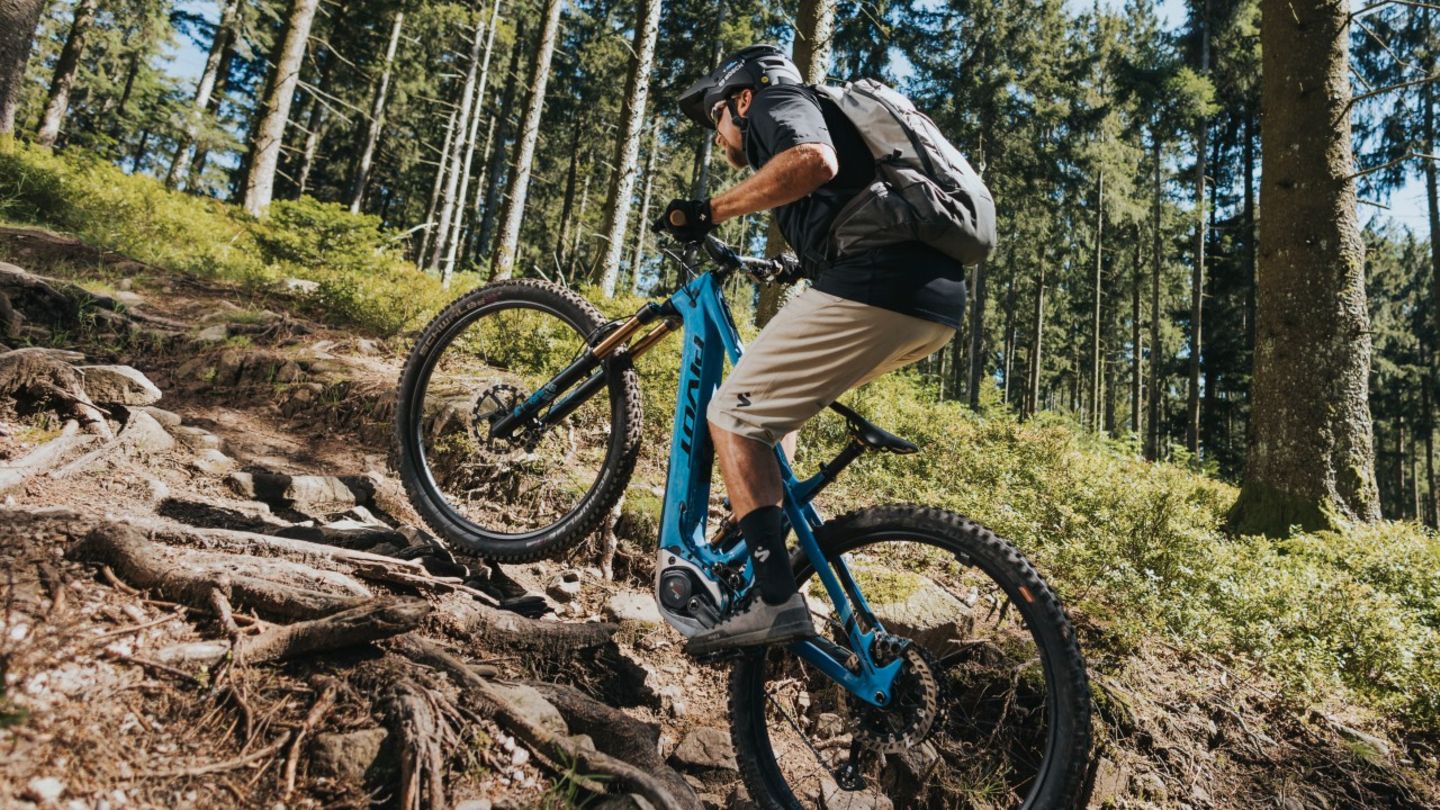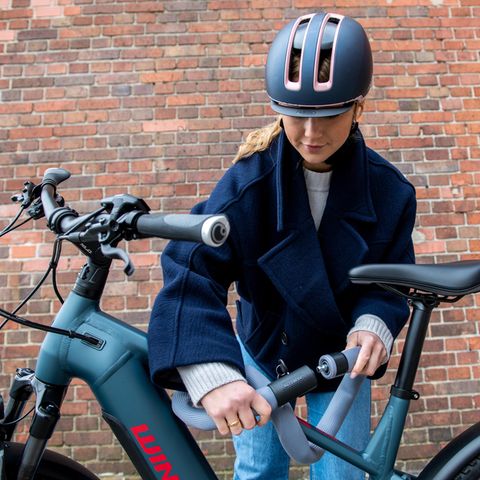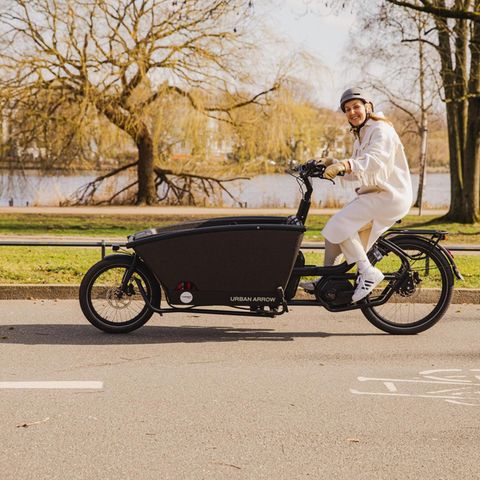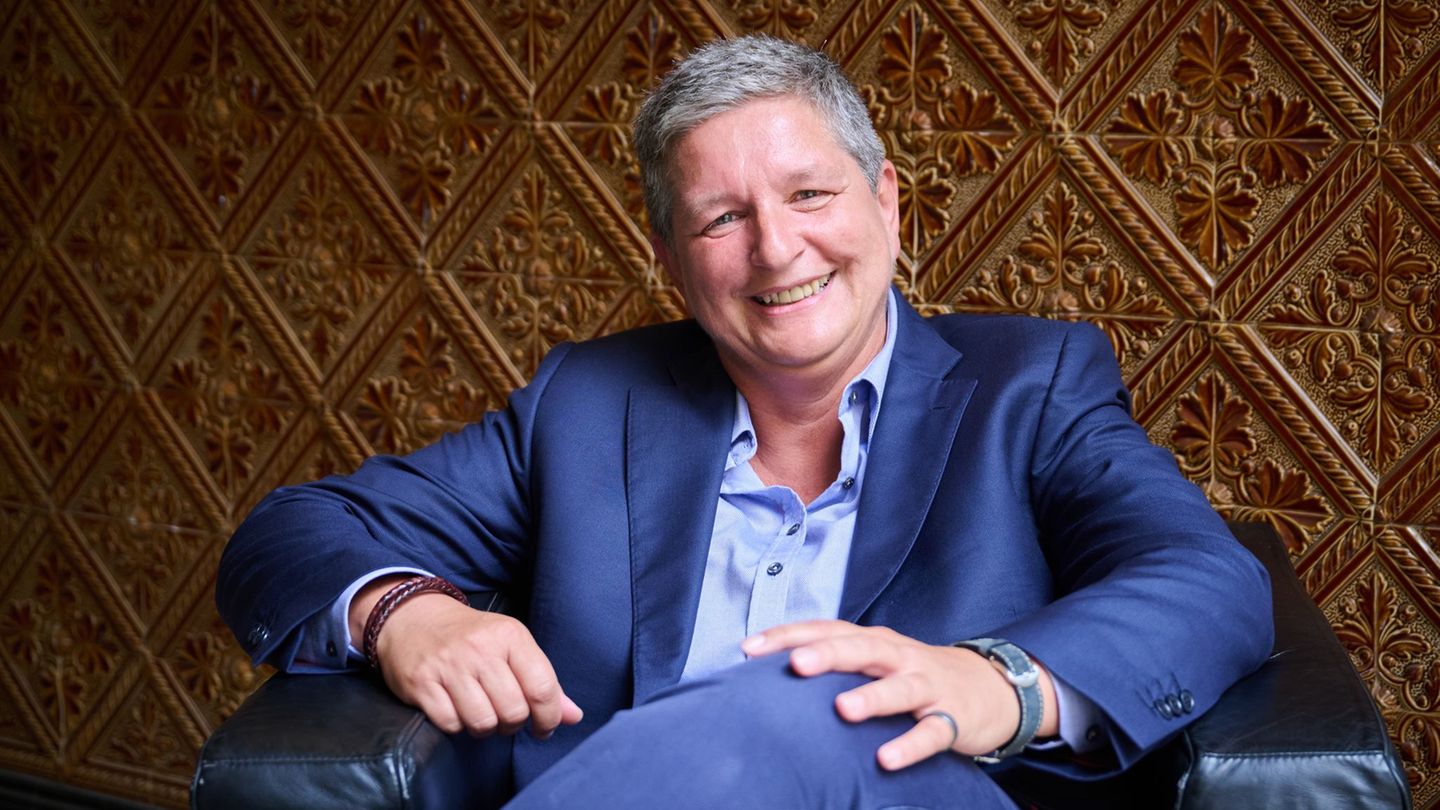E-mobility
E-bike chief of Bosch: “An e-bike must remain affordable”
Copy the current link
Add to the memorial list
E-bikes have conquered the market. The star spoke to the boss of Bosch Ebike Systems, Claus Fleischer, about better technology, traffic policy and the prices of e-bikes.
Claus Fleischer, today e-bikes are often with Bosch Identified, but you did not invent the wheel with an electric motor. This already existed, especially in Asia, e-wheels were widespread. How did Bosch come up with the idea of building e-bikes?
To answer this, we have to go back 17 years. The year 2008 was characterized by a banking crisis, economic crisis and also an automotive crisis. At this point we wondered at Bosch: What are the big megatrends of our time? And there we were quickly with aspects such as resource shortage, emissions, the environment, the demographic change and the global trend towards urbanization. From this it was clear that the future of mobility would be electrically and thus in the long run would be emission -free.
Why didn’t Bosch not right away Cars built?
If you want to operate vehicles electrically, you need a battery. Batteries are usually large and heavy, so it makes sense to electrify small light vehicles. We were convinced that the acceptance of electromobility is achieved faster where the batteries are smaller and customers win more fun and benefit from driving with an acceptable additional price. The logical order at the time was as follows: electric bike, electric motorcycle, small electric car, large electric car.
The E-bike Or more precisely the pedelec is the logical entry. But they didn’t come first.
No, electric bikes were already available in the 90s and 2000s. But the pedelec was still in the beginning and was still before the breakthrough. We knew the lithium-ion battery from our power tools and as suppliers of the auto industry, we dominated the topics of drive technology, electronics, sensors, software. So it was obvious to bring these fields of competence together and to develop an e-bike system.
They have taken their own way. You have decided not to produce complete bikes.
Exactly, we consciously decided to become a system provider and help the bicycle industry to electrify the wheel. Our approach is to offer an integrated system from a single source – consisting of drive, battery, control unit, display and charger. The manufacturer can then find the optimal solution for its model from our modular kit.
That is the industrial page. You have also provided development aid in series production. From the customer’s point of view, the first thing you came up with came to the idea of doing the e-bike sporty.
At that time, the electric bike was still considered a niche product, especially for seniors – far from a sporty or lifestyle -oriented image. We were convinced that to inspire more people for the e-bike, it has to be more attractive, sportier, younger. With this thought we have developed our systems and continuously improved – especially in terms of drive power, reach, battery technology, digitization and design integration.
A lot has happened. The first engine looked like a coffee grinder, the batteries were simply mounted on the frame.
That was the time until about 2015/2016. Then the era of design integration began: the drives were seamlessly integrated into the frame and the batteries were embedded in the lower tube. This development visually lifted the e-bike to a new level and made it a great lifestyle product.

The bikes also became more and more powerful. The legislator limits the performance, but the torque increased, the batteries became stronger.
With the increasing demand for e-bikes, more drive performance and more reach were also in demand, which made the wheels more difficult and the price points rose. Between 2020 and 2022, this development reached a climax and a natural limit: more range and more power are not needed to be on the road with an electrified bike.
Let us talk about prices. The top models have always been beyond good and evil-even with bikes without an electric drive. But the prices for trekking wheels have also attracted a lot in the covid years. Everyone likes to earn, but don’t you lose big customer groups at some point?
You get electric bicycles in specialist shops in a large price range. From around 2500 to over 10,000 euros. In some cases, the middle prices have slipped over 3000 to 4,000 euros in recent years. This was due to a high willingness to pay for more drive performance and more range.
If e-bikes have become so expensive, are we experiencing a bike inflation?
No, you get significantly more for your money: more performance, more reach and more driving pleasure. Our first system from 2011 had 45 Newton meters and 288 watt hours. Today we are doubled at 85 Newton meters and 800 watt hours, i.e. the Newton meters and tripled the watt hours. However, the bikes have not become three times more expensive.
What do you think is compatible with a medium price?
When we don’t talk about particularly equipped sports bikes, but about everyday pedelecs, I think of prices around 3000 euros. If we say that the e-bike should also be accessible to a wider target group, we have to make sure that these price points do not hike up further. An e-bike must remain affordable.
But you have to do without a lot that would be technically feasible.
As a everyday driver, you don’t need much that is feasible. Watt hours and Newton meters not only drive the price, but also weight and also the follow -up costs through wear. If you want a bike below 20 kilos, then 50 Newton meters and 400 watt hours in the city are sufficient.
With many innovative products, customers experience that after a few years there are problems with repairs and spare parts. Also with expensive things, such as e-cars or heat pumps.
We focus on a long life. These are high -quality products and then the customer can also expect quality, reliability and good service. For example, we test our batteries for 20,000 kilometers and 500 full charging cycles. This is more than most e-bikers in use, even if the batteries are even designed for significantly more. Here in Stuttgart I still see electric bikes with our first generation of systems from 2011. And we also have spare parts for it today.
Despite the popularity of the e-wheels, the industry is in the crisis. How does it come?
To understand that, we have to look back on the time of corona apandemy. During the Lockdowns there were massive supply chain interruptions, especially for frames, chain circuits, brakes and other mechanical and electronic components from Asia. The availability was severely restricted, so that many manufacturers tasks larger orders – in the hope of receiving at least part of the goods. This imbalance has had long -term effects on the market.
This has taken action and caused the current crisis.
Right, at the end of 2022 the supply chains were again intact, the goods available and the ordered amount was completely received. In 2023 and 2024, a lot of goods came into the system, the stocks from manufacturers and trade rose sharply. In addition, there is a dent in demand on the customer side because so many bikes were bought in the Covid period. In 2024 and 2025 we can speak of market consolidation until all of this has calmed down.
Now the question: what’s next?
In the long term we believe in the success of the e-bike and that the market is growing again. In terms of content, the topics of digitization, automation and security play a major role for us. Thanks to the battery, we have energy on the e-bike, and we have electronics and thus intelligence on board-and this results in a variety of options.
The classic wheel came out without intelligence. What are these new possibilities?
The digitization of the e-bike, ie the “Connectivity” area, makes the driving experience more individual, more comfortable and safer. Before the trip, you can have personalized route suggestions created, which are based on your previous driving habits and then be navigated. Or thanks to AI-based technology, you can determine which battery charging level you want to arrive at your destination. Once a quarter, we offer new digital features that customers can easily download from the smartphone.
The networking of the e-bike also results in new possibilities in the area of theft protection: If the e-bike is stolen, I can track the location of the e-bike in the app. You get the GPS data of the e-bike-and the police can then easily find the bike.
The keyword “automation” comes into play when switching. Our “ESHIFT” solution helps you to always be in the right gear. You set your desired pedal cadence and the rest makes the circuit. If you talk about security, the ABS – i.e. an anti -blocking system.
An electronics that prevents the bike from slowing down so that it stops abrupt. Which almost always leads to a fall on the two -wheeler.
We introduced our first ABS in 2018, in 2022 our second generation, which is much smaller and more compact and almost invisible on the e-bike. Now comes a sporty ABS, the ABS Pro, for sporty drivers who are traveling on trails with the e-mountain bike.
How do you explain the success of the e-bike to the customer?
We have an advantage: people like to ride a bike. The electric bike takes away the excuses not to ride a bike. The path is too long, too far, too strenuous, these excuses are gone. We get people on the bike through the electric drive who would otherwise run no or a little bike. The e-bike is an important part of sustainable mobility. The inner cities still have a traffic problem and people saw, if the infrastructure is right, you can be very well traveled by bike. The electric bike is attractive in itself, it does not need tutoring. The only question is, what is the boundary conditions, what does the infrastructure look like? We would be happy if more happens politically.
Bad bike paths and many thefts can have cycling.
The bike is still a victim of vandalism and theft. If we want the mobility turnaround as a company, then two things are needed, especially in the city centers: safe driving and securing. Only if you feel safe as an e-bike driver if you get through well in traffic and if you know that your bike at the train station or when shopping or at work is still there, you will also use it.
I understand them correctly: from the product page from the manufacturers, is the e-bike now mature, only in politics it is a problem?
Yes, exactly. We have some catching up to do with the infrastructure, i.e. bike paths for safe driving and secure storage options. As a manufacturer, we cannot provide that. Politicians are required.
Source: Stern
I’m a recent graduate of the University of Missouri with a degree in journalism. I started working as a news reporter for 24 Hours World about two years ago, and I’ve been writing articles ever since. My main focus is automotive news, but I’ve also written about politics, lifestyle, and entertainment.






